How to clean tiles from tile adhesive?
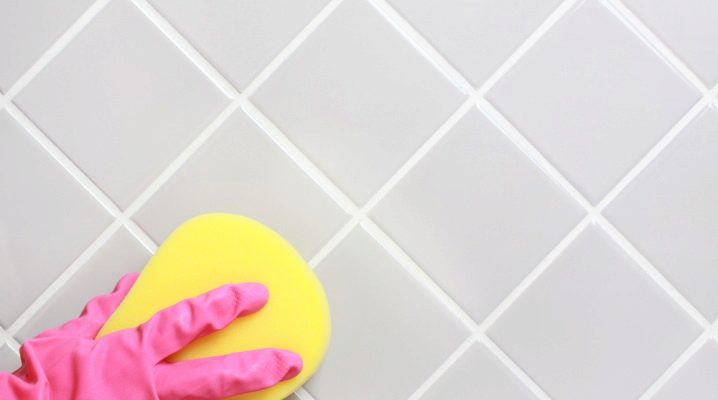
After finishing the interior decoration of the tile, traces of glue must remain on the tile, which must be removed. It is impossible to leave the cladding in this form, because the appearance of the bathroom or kitchen will be unattractive, and the material will accumulate bacteria in itself, which worsen the hygienic conditions.
Depending on what kind of glue was used for the work, there are a number of ways to remove dirt using special or improvised means.
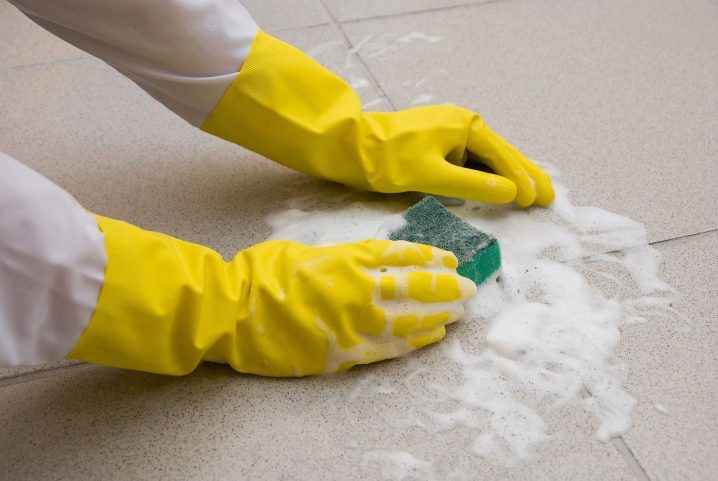
Types of tile adhesives
The fastening material can contain various components. The speed of drying, the durability of the result and the method of applying glue to the wall depend on the composition. Therefore, the methods of cleaning ceramics from various adhesive materials differ from each other.
Among the adhesive bases, it is customary to distinguish:
- Cement adhesive. A plastic material often used by craftsmen for gluing tiles. Dense density allows the tiles to be well fixed on the wall. The quality of such glue depends directly on the impurities added to the solution during its preparation.
- Epoxy adhesive contains synthetic resins, thanks to which the base hardens slowly. Because of this, it is not popular among builders, and it can also be difficult to wash it off even from a glossy surface. For cleaning, special solvents are usually used, which can be purchased at any building materials store.
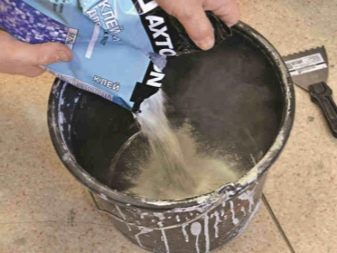
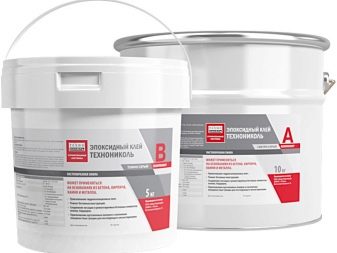
- Polymer glue popular along with cement. It looks like a gel or paste that hardens quickly. The composition contains acrylic, so the dirt can be cleaned off only after using a special acrylic solvent.
- Homemade glue. To save on the purchase of factory material, many builders have their own recipe for making a tile adhesive base. Typically, such a solution includes cement with sand, which are added in certain proportions. If the proportion of sand significantly exceeds other components, the material will turn out to be free-flowing and will not be able to fix the elements of the coating. One of the advantages is the ability to personally control the composition of the mixture, which will facilitate the choice of a means for cleaning the surface from glue.
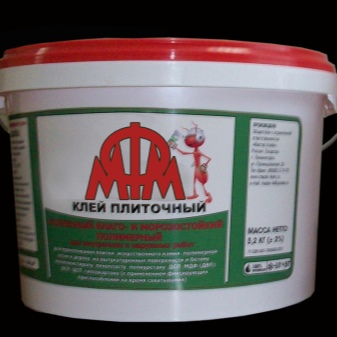
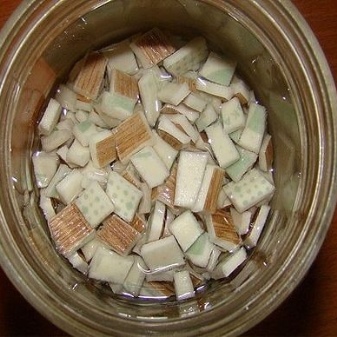
It should be remembered that if the mixture is characterized by rapid hardening, then the stains from it must be removed as soon as possible, otherwise it will be extremely difficult to clean off the traces that have dried on the front part.
Methods for cleaning the surface from glue
Before removing glue stains, it is advisable to familiarize yourself with the type of mixture applied to the wall during the renovation. Each cleaning method will be effective in its own way on different adhesives.
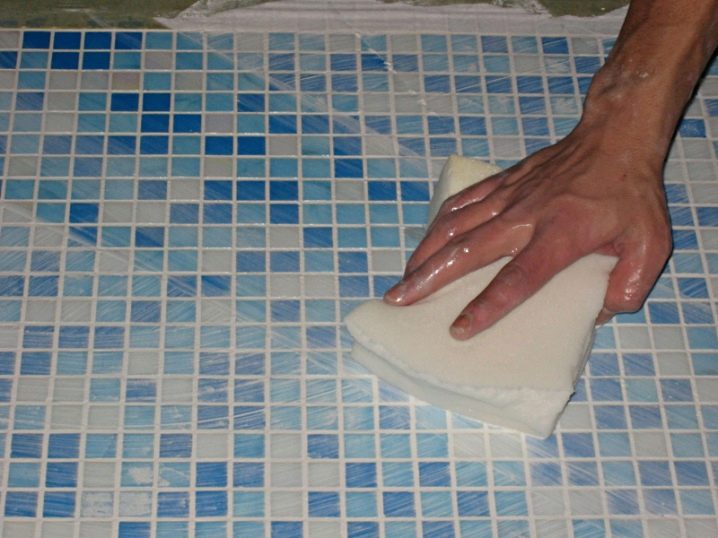
Fresh glue
Finishing work requires maximum care when applying the solution. But there are times when the surface of the tile "suffers" from unnecessary stains. This happens when glue bleeds through at the seams or when you accidentally touch an already laid tile.
At such moments, it is required to immediately wipe the stained surface, preventing hardening.
Each laid rectangle must be cleaned with a rubber spatula, removing excess glue that has emerged at the joints. Then the spatula must be rinsed in warm water and removed from the smudges formed on the surface of the ceramics.

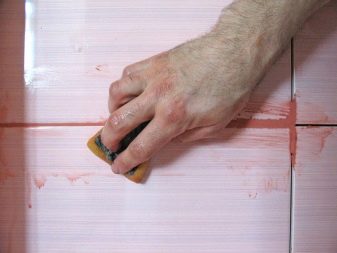
For maximum effect, you will have to moisten a rag or sponge in warm water and wipe every segment where there was dirt.
Wipe off moisture with a dry cloth to prevent water from mixing with the glue, otherwise it will be impossible to wash off such a plaque.
If, during work, one of the tiles is accidentally stuck crookedly or too pressed into the base, this is not a big deal. You can pry out the edge of the element with a spatula and separate it from the wall until the glue is dry. The back surface (facing the wall) must be cleaned of the mortar and re-glued in place, being very careful.
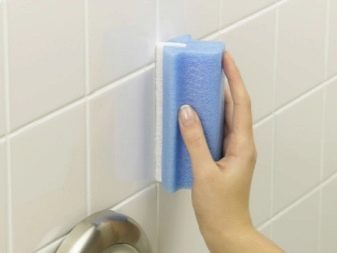

There have been cases when unscrupulous craftsmen did not adhere to this technology due to the fact that it takes a lot of time. After all, in this case, you have to gradually cover small sections of the wall with glue so that the uncoated base does not harden when the tiles are wiped. In addition, most mixtures have a limited residence time in the air in a liquid state, so they must be used in a few hours.
To avoid wasting expensive material, you will often have to prepare a new mixture in small quantities.
It is good if there is an assistant who will instantly wipe the tiles after laying, but if he is not there, then you will have to work slowly.
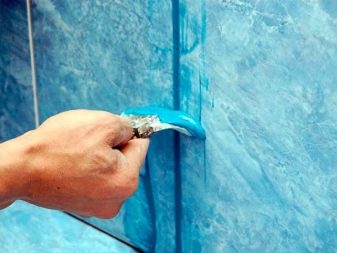
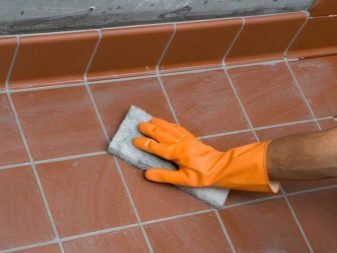
Hardened glue
If the finishing work is completed, and at the same time, there are still dried traces of the adhesive base on the tile, you will have to remove them manually. The main thing is to start cleaning as early as possible in order to increase the chance of removing stains without leaving a trace. Quick-drying mixes will finally harden within two to three days, and conventional mixes will take a week.
Therefore, you should hurry to remove the mixture in a semi-dried state, otherwise you will have to use aggressive chemicals that can spoil the appearance of the tile itself.
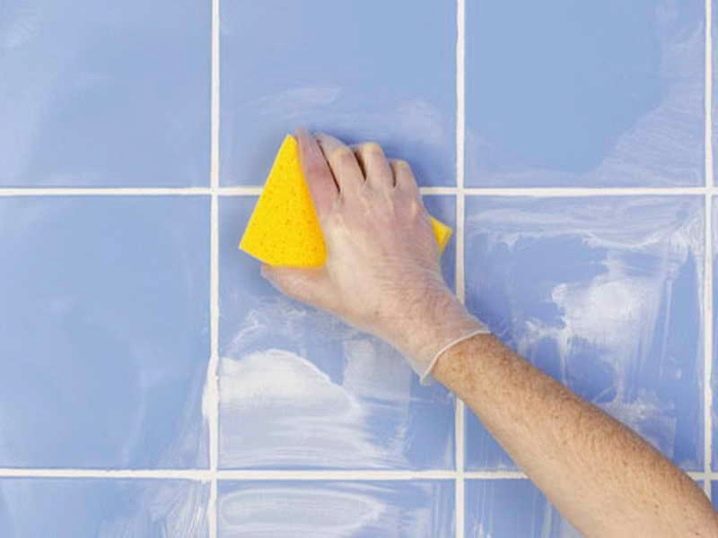
A rag and a spatula will not help here anymore, so you need to put a little more effort, sequentially performing the cleaning steps:
- First you need to wet the stain with water. This will allow the mixture to soften and bond less firmly to the ceramic.
- Usually the stain is not completely saturated with moisture. Only the peripheral layers become soft, which must be removed with a sponge. It is better to try to clean the rest of it with a pumice stone, a hard brush or sandpaper, without touching the facing itself. If we are talking about small drops, they can be cleaned off with a nail file, but this option will not work for bulky stains.
- If the mixture is already scraping off with difficulty, then there is no need to rush and make great efforts, because the situation can be aggravated. It is better to repeat the wetting procedure with water, wait until the upper layers are softened again, and then remove them again with a sponge. This must be repeated until the stain is even with the tile.
- Now you need to put aside all the harsh methods and take softer tools. The last layer must be wetted and removed with an ordinary hard sponge or an old toothbrush. It is not necessary to use household chemicals for this.
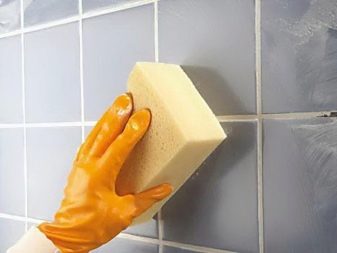
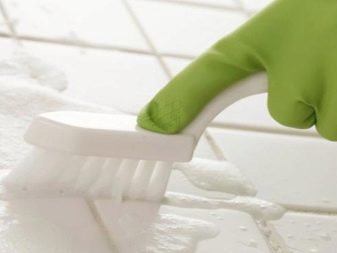
If everything is done correctly, then in the end you can achieve the desired result. As with laying tiles, it is important to avoid haste when cleaning.
Chemicals used to remove glue stains
The use of household chemicals is required in cases where the tile adhesive has finally hardened. Specialty solvents are sold on the shelves of hardware stores and are often made by the same companies that make the adhesive itself. Aggressive joints dissolve the mass even in deep cracks and gaps.
There are a number of requirements for such funds:
- The liquid must match the main component of the adhesive. Therefore, before going to the store, it is recommended to clarify what the unwanted stains consist of.
- The degree of action on contamination can be different. Some cleaners simply loosen the glue, making it easy to remove with a rag. Other products completely erode stains to the very base, penetrating into the smallest gaps.

- Many products can damage the surface of the tiles, so they need to be tested on inconspicuous areas of the finish so as not to spoil the appearance of the entire surface.
- When using chemicals, safety precautions must be observed. It is advisable to turn on ventilation in the bathroom so as not to be poisoned by poisonous vapors. You also need to protect your skin by wearing rubber gloves. If liquid comes into contact with eyes or mouth, it is recommended to rinse immediately with clean water.
- It is required to protect the seams at the joints from the cleaner. After all, if chemistry gets on them, this can lead to loosening of the glue and the lag of the tile from the wall. It is best to cover the grout joints with tape or duct tape before cleaning to protect them from harsh chemicals.
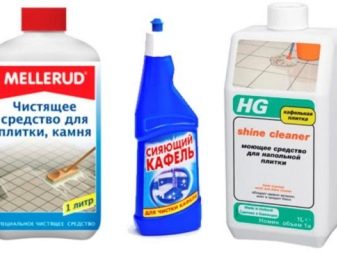
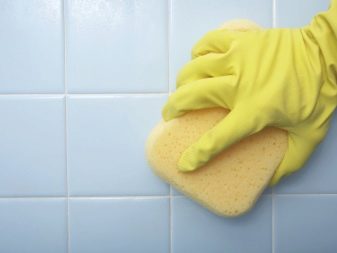
Recommendations for the use of special products are usually described on the packaging. For the desired result, it is advisable to adhere to the manufacturer's advice.
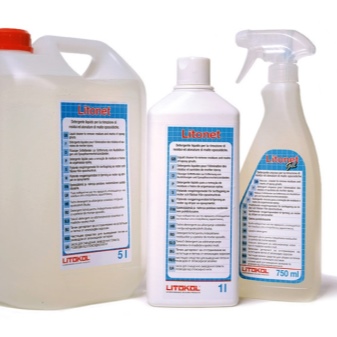

In addition to factory cleaners, you can use the tools at hand that are in any home:
- Lemon acid. 50 g of acid is diluted in 1 liter of hot water, mixed thoroughly and cooled to a warm state (when it stops burning). Then you need to moisten a rag in the solution and apply the liquid to the contaminated surface. The softened mass is removed with a dry sponge.
- Soda. The powder is diluted with cold water to a mushy consistency. Such a mixture is applied with a sponge to the glue and left for a certain time. Then it is washed off with clean water, and the surface is dried.
- White. A cap of regular chlorine bleach is diluted in 2 liters of water. To greatly facilitate the process, you need to moisten a hard cloth or sponge with the resulting liquid.
- Table vinegar. The method requires the use of protective gloves. Vinegar is applied to the glue mass and left for a few minutes. Then the softened layer is removed with a sponge. The procedure is repeated if necessary.

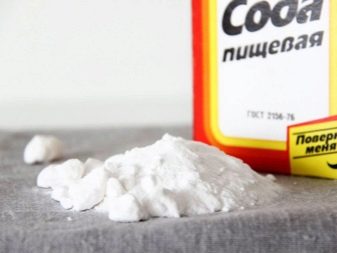
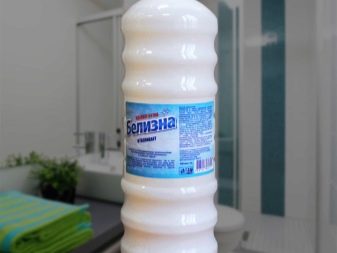

These methods are relevant in the drying stage of the glue, but they do not remove the hardened mass poorly. Therefore, it is recommended to use factory chemistry for dried stains.
Cleaning tile adhesive for reuse
Practical and economical craftsmen always find a way to use previously used building materials. Often, old tiles can be useful for covering the floors of a flight shower, outdoor toilet or technical rooms. In such environments, presentable appearance is not essential and surfaces are usually easier to clean. However, before use, you need to clean off the old glue, otherwise you will not be able to lay the tiles exactly.
Usually, the surface of the back side of the tile has irregularities or roughness provided by the manufacturer for better adhesion to the substrate. Therefore, it will not be easy to remove the layer of old glue, sometimes up to a full centimeter.
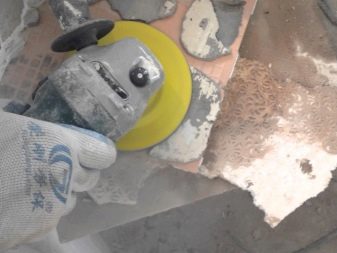
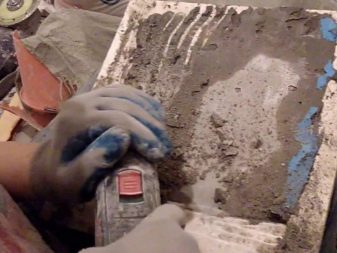
The tile with the mortar is immersed in water for several days to soften the glue. It is not necessary to use hot water, as the mixture cannot be removed later.
Next, the old layer is cleaned off with sandpaper, a grinding wheel or other sanding tool. The remaining layer can be carefully removed with caustic (battery) acid. After the final rinsing with water, the tiles are ready for use.
It is not at all difficult to clean ceramic mosaic tiles from PVC and other type of glue. It is not difficult to wipe away stains from ceilings, walls and floors if the indicated recommendations are strictly followed.
For information on how to effectively clean tiles from tile adhesive, see the video below.













The comment was sent successfully.